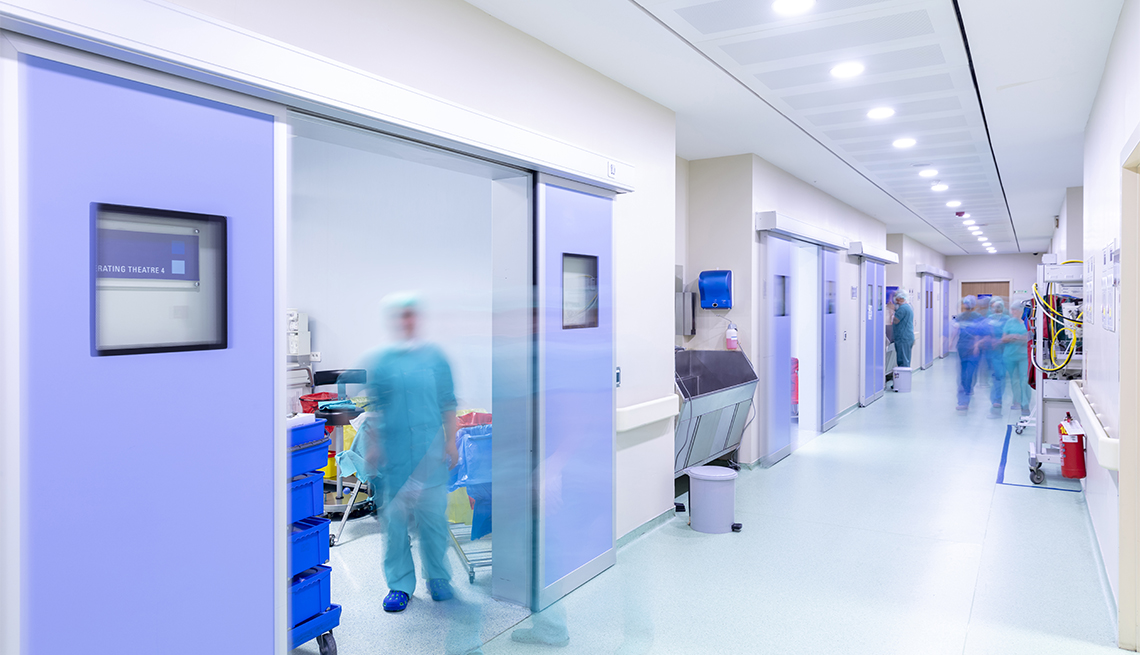
What to expect at an er visit during coronavirus
- Select a language for the TTS:
- UK English Female
- UK English Male
- US English Female
- US English Male
- Australian Female
- Australian Male
- Language selected: (auto detect) - EN
Play all audios:

"If you come in here and don't have a COVID problem, you will never see a person with COVID, and the nurses who take care of you will never see a COVID patient,” says Todd Taylor,
M.D., an emergency medicine physician at Grady Memorial Hospital in Atlanta and an ACEP spokesperson. Whenever possible, hospitals also put infected patients in so-called “negative pressure”
rooms, which are designed to prevent contaminated air from escaping. Most hospitals initially had only a few such rooms, but many have quickly figured out how to create more by converting
their HVAC system and making structural changes. Baptist Health Lexington transformed an entire wing of its ER, as well as two CT scanners, into negative pressure areas, Stanton says.
What's more, COVID-positive patients are kept inside their rooms as much as possible. “We don't send those patients to the X-ray room. We bring the portable X-ray to them,” Vukmir
explains. If an infected patient does have to be moved, the elevator is locked down to prevent anyone else from getting on, and the patient is escorted in a private procession. “It's
almost like the president is coming through; we don't let anyone near them,” Stanton says. HOSPITALS ARE FINDING SOLUTIONS TO PPE SHORTAGES Nationwide, hospitals still face a critical
shortage of PPE (personal protective equipment), especially N95 respirator masks, says Akin Demehin, director of policy at the American Hospital Association. But hospitals have been creative
in coming up with solutions, he says. Many are using hydrogen peroxide vaporization to sterilize masks so they can be reused. Others ask medical workers to rotate through a fixed number of
masks, placing used ones in a paper bag at the end of a shift and not using them for a specific number of days. (Studies show that coronavirus particles on a surface lose their viability
significantly after 72 hours.) Both processes have been temporarily approved by the Centers for Disease Control and Prevention (CDC) during the pandemic. To help their N95 masks last, many
physicians wear a surgical mask or a plastic face shield on top of it. And a growing number have purchased reusable respirators — hard plastic masks with cartridges that trap airborne
particles — meant for industrial painting or manufacturing. They can be easily sterilized between patients, and the CDC says they protect as well as, if not better than, N95 masks. "It
looks like an astronaut helmet, but I know I'm breathing in uncontaminated air,” says Angela Fusaro, M.D., an emergency medicine physician in Albany, Ga. Anyone who enters the room of
an infected patient also wears a cap, gown, gloves and eye protection. “They have little PPE stations right outside of the door of all the COVID patients, so you can do everything right
there,” Fusaro says. At some hospitals, trained monitors watch to make sure staff members don't miss a step when they don and remove equipment. YOU MAY BE SENT HOME TO RECUPERATE If you
do end up in the hospital during these unprecedented times, you may not have to stay as long. To keep beds available for a possible surge of COVID patients and reduce the risk of infection,
many doctors are discharging patients a little earlier than usual, Taylor says. To make the transition easier, they are sending patients home with high-tech systems that allow them to
remotely monitor the patient and staying in close contact through telehealth visits. If a patient has had surgery for a heart attack, for example, cardiologists can send him or her home with
wearable devices that offer real-time monitoring of their heart rate, blood pressure, daily step count and sleep habits. They may also require in-person checkups with a visiting nurse
service. Even patients seen in the ER but not admitted to the hospital are being given devices for increased monitoring, Taylor says. The systems can measure a COVID-19 patient's oxygen
level remotely, an important indicator that can tell doctors if the patient's health is declining. "If we're a little worried about a patient, the monitoring systems allow us
to send them home but keep closer tabs on them,” Taylor says. “And the patient can connect with us by video just by pushing a button.”
